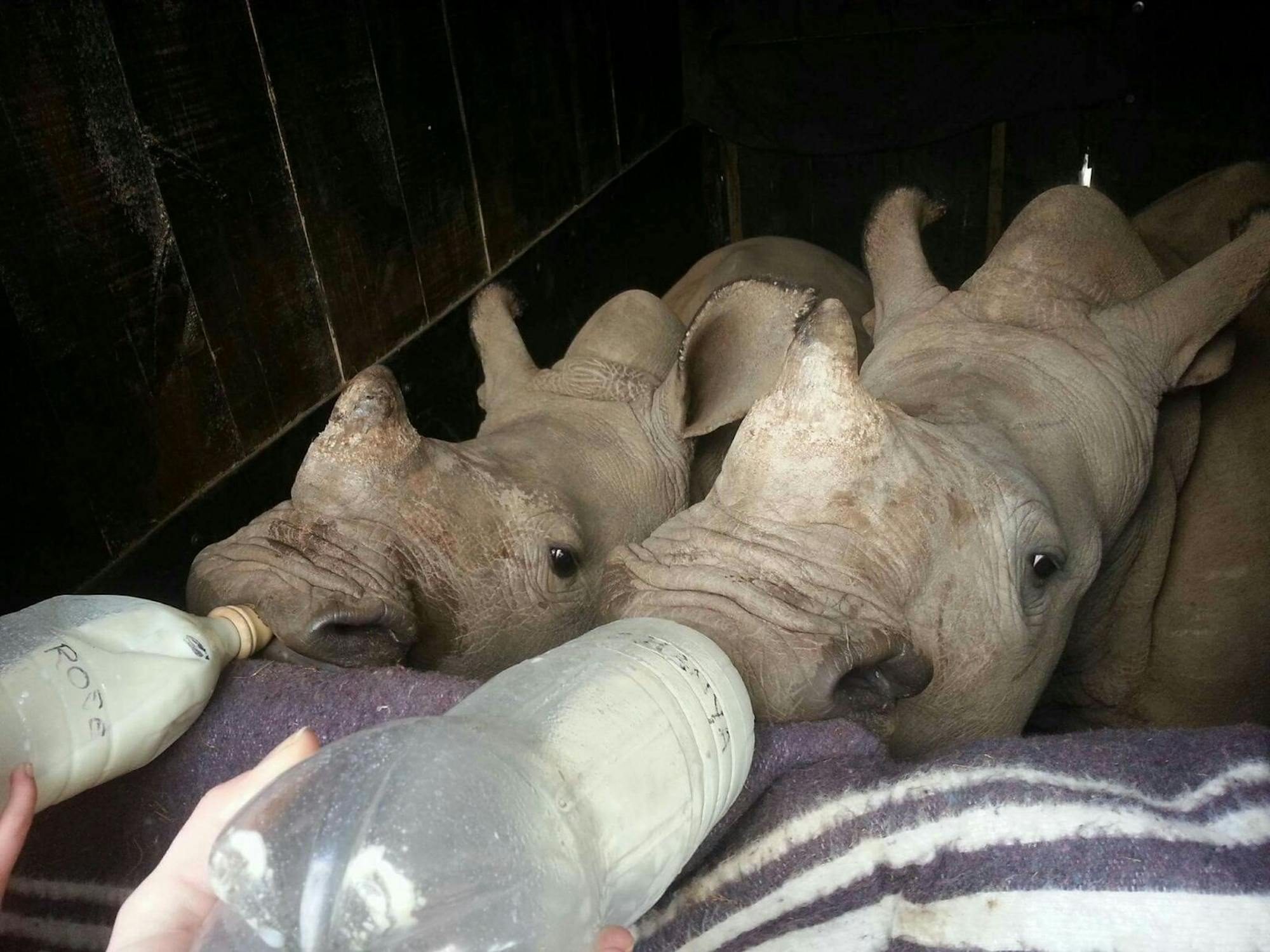
A break from the corporate world
The days are getting colder and shorter, and the winter blues are approaching… For many, that might be enough to start daydreaming of a career break – or at least, a long trip away. Abigail Salmon took the plunge and shared her story of escaping a corporate job to feed hungry baby rhinos and greedy goats.

I’d spent the best part of 18 years commuting to and from the financial district, and I’d just turned 40. Having never experienced a gap year, I felt something was missing. It was a chance Google search that led me to sign up for a conservation placement at Khulula Care for Wild in South Africa.
Before I knew what was happening, the plane touched down in Johannesburg, and I found myself on a four-hour road transfer with other volunteers. Having just discovered a chapter dedicated to snakes in The Wildlife of Southern Africa: A Field Guide to the Animals and Plants of the Region (recommended reading), I felt a little apprehensive – I’m not a huge fan of snakes.
A month later, I was returning to the airport, and snakes were long forgotten. It was an incredible four weeks, and I learned so much about the care of orphan rhinos. It’s sad to think these remarkable animals could be extinct in the wild in our lifetime. You will experience many things at Khulula. Whole stories can be written in a single day. Here are some of my highlights.
A magical dawn
It’s 6 a.m., and you’re walking down the hill to the lower enclosures. Vervet monkeys are cuddling one another – it’s a little chilly for them to venture out yet. Mist is rising off a field where you glimpse the silhouettes of nyala and bushbuck grazing on damp grass. Some are having mock battles, testing the strength of their peers. Further on, the orphaned rhinos are beginning to stir in anticipation of breakfast. You pass by quietly so as not to disturb them. There is a beautiful stillness about this time of day.
It’s all about the mud
Nothing brings a smile to your face more than watching a rhino take a mud bath. Rhinos love mud like elephants love water – the muddier, the better. Mud is important for the skin of a rhino. It protects against parasites and the sun’s rays. Every afternoon, mud baths were made for the rhinos. It was a wonderful thing to experience the youngest rhinos taking their first mud bath.
Pyjama feeds
Your alarm is bleeping, and you check the time. It’s 1.30 a.m. It would be so easy to roll over and go back to sleep, but you know there is something important to do. You crawl out of your sleeping bag, put on your warm coat, woolly hat and boots, grab your head torch and leave the cabin. A short while later you’re in the barn armed with a whisk and mixing up a batch of milk for the next bottle feeds. The younger rhinos get fed every three hours but the good news is the 2 a.m. feeds are done on a rota basis.
And finally … the misadventures of Bella
No trip to Khulula would be complete without mentioning Bella. She’s a goat who oozes personality and naughtiness. Food is the very reason she exists. If you turn your back for one minute, she’ll have her head in a bucket. She’s not afraid of butting the rhinos out of the way, despite her size, to get their food. Never a day went by when I wasn’t giggling.
If you are planning your annual holiday or thinking of taking a longer break, then consider doing something different and creating your memories. You won’t be disappointed.
Abigail Salmon, ACE Volunteer

